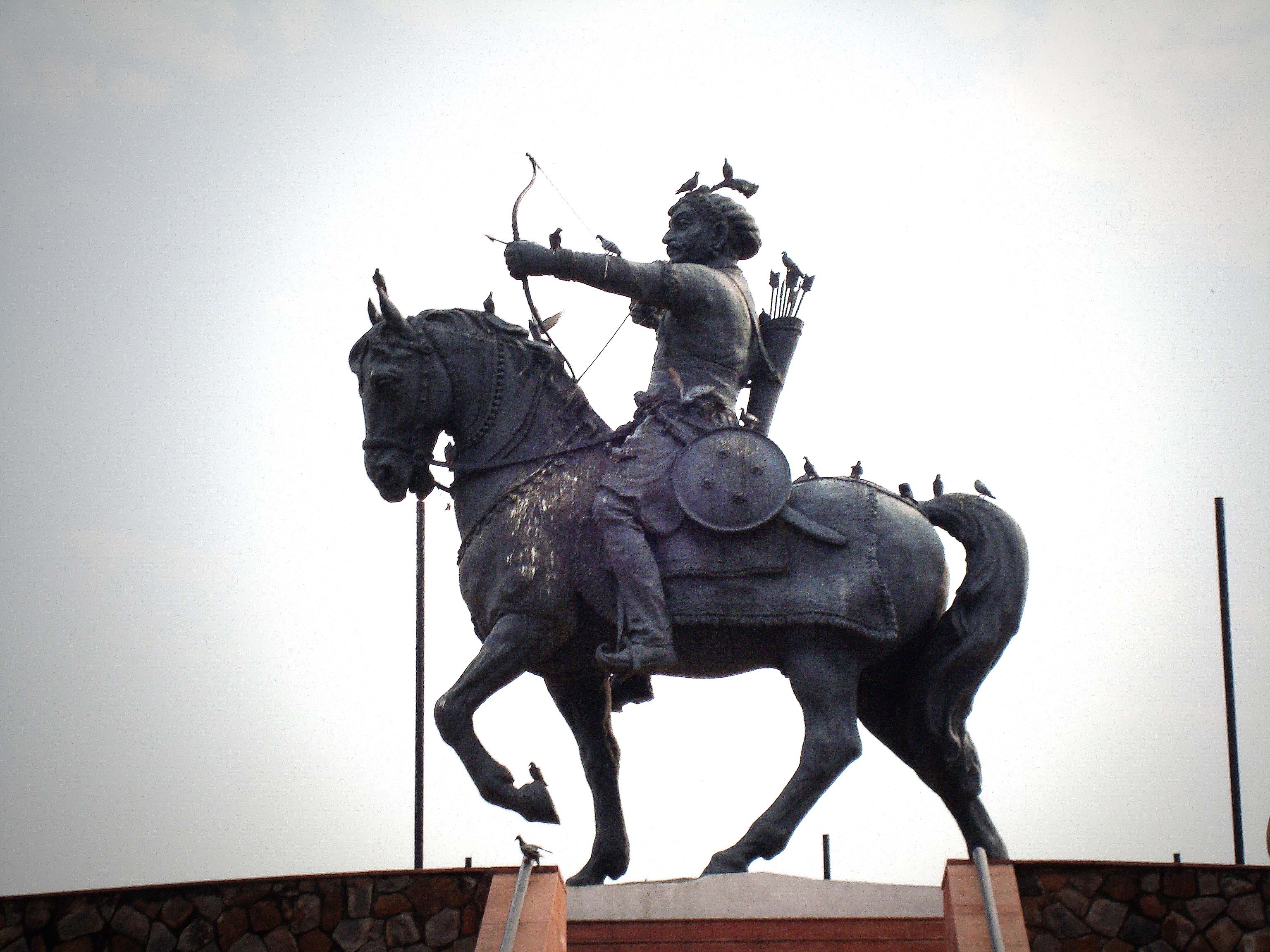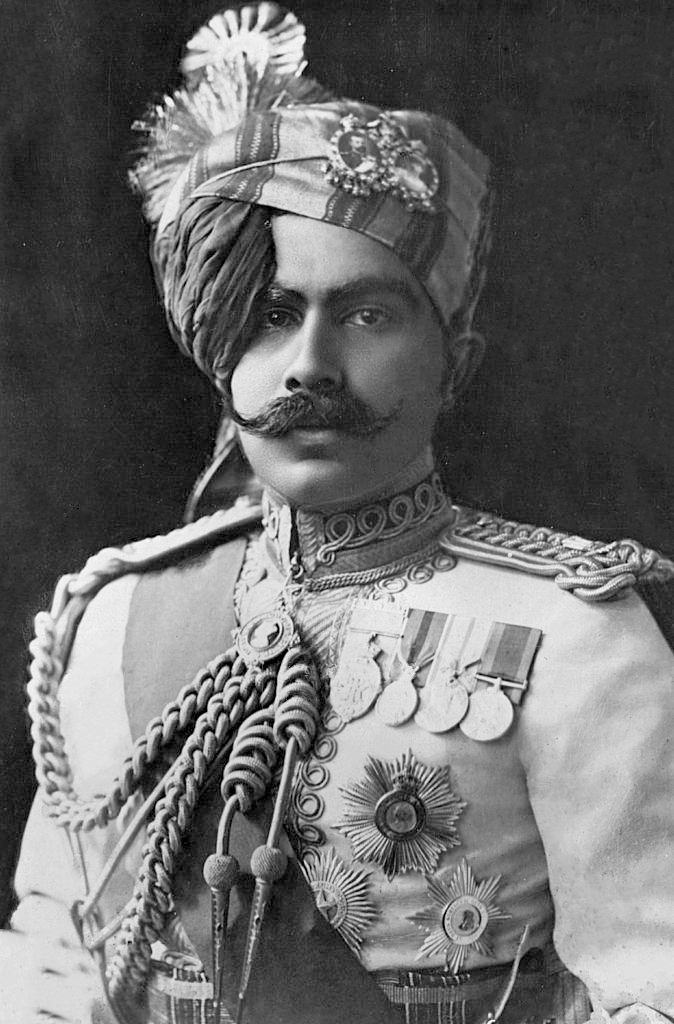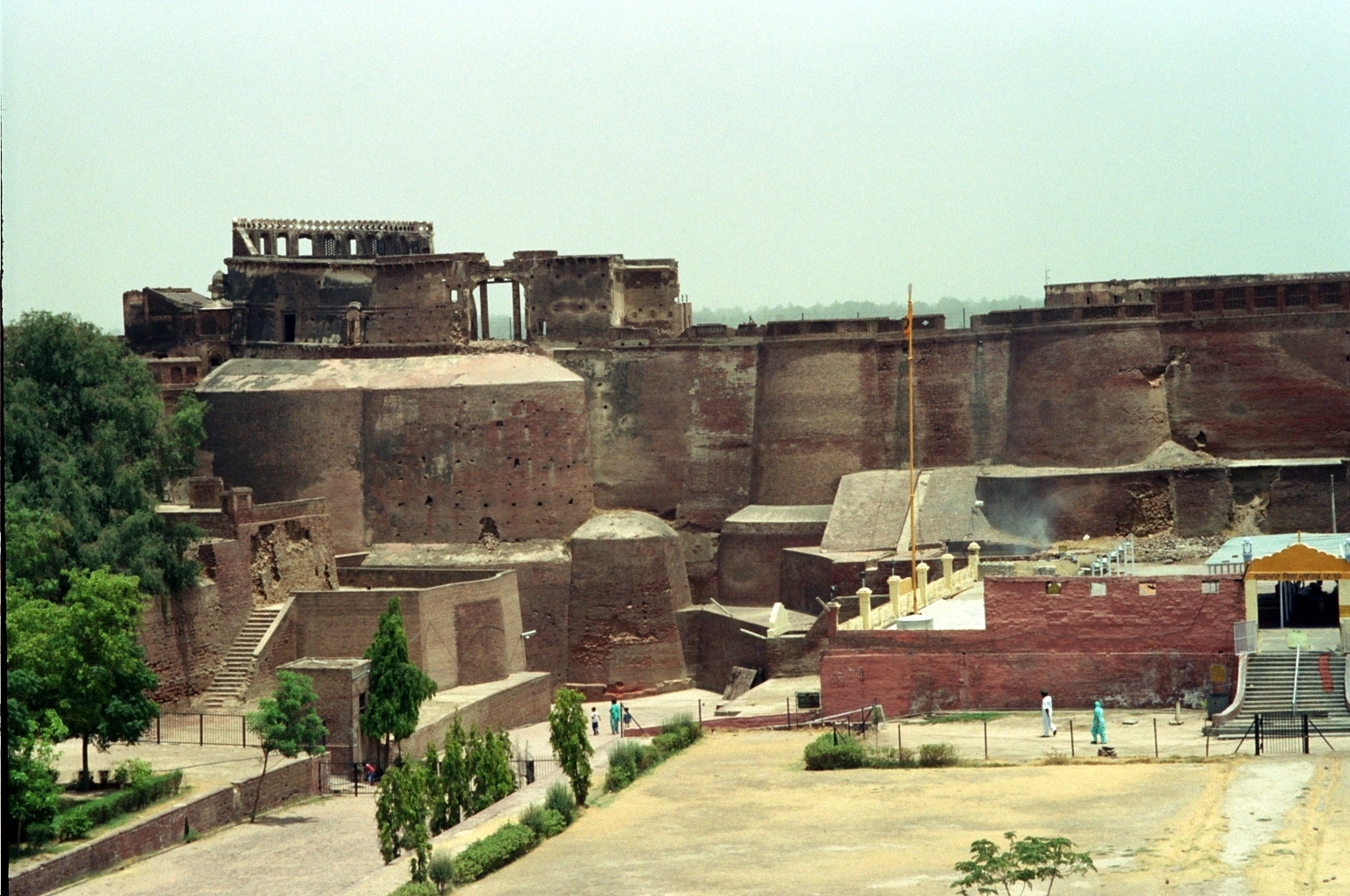|
Bhatner Fort
The Bhatner fort is at Hanumangarh in Rajasthan, India, about 419 km northwest of Jaipur along the old Multan-Delhi route and 230 km north-east of Bikaner. The old name of Hanumangarh was Bhatner, which means "fortress of the Bhati". Believed to be 1700 years old, it is considered to be one of the oldest forts of India. History The ancient fort situated on the bank of River Ghaggar was built between 255 AD to 285 AD by the King Bhupat of Bhati, Bhati Dynasty. There he constructed a safe castle for himself which came to be known as Bhatner. The entire fort is built of bricks, covering an area of 52 bighas. It is in the shape of a parallelogram, with a dozen bastions on each side. Painted Grey Ware (circa 1100-800 BCE) and Rang-Mahal Ware (1st-3rd century CE) have been found in wells situated along the wall. In the middle of the thirteenth century CE, Sher Suri (or Sher Khan, not to be confused with the much later Sher Shah Suri), a cousin or nephew of Balban (the Sul ... [...More Info...] [...Related Items...] OR: [Wikipedia] [Google] [Baidu] |
Hanumangarh
Hanumangarh is a city in the Indian state of Rajasthan, situated on the banks of the river Ghaggar also identified as Ancient Sarasvati river, located about 400 km from Delhi. It is the administrative seat of Hanumangarh District. The city was once called Bhatner (alternatively spelled Bhatnair) because it was founded by king Bhupat in 255 AD. It remained in the control of the Rajputs of Bhati clan and faced a historic siege by Timur in 1391, during which the Bhati Raput king Dulachand lost the fort for a short time. The fort was later occupied by Rao Jetsa of Bikaner. History Indus Valley Civilization Indus Valley civilization sites in the district number over 100 villages along Ghaggar-Hakra River ( Palaeochannel of Sarasvati River), such as Karanpura. Remains found at Kalibangan and Pilibanga in 1951 reveal that this area was a part of nearly 5000 years old civilization. The remains of human skeleton, unknown scripts, stamps, coins, utensils, jewelry, toys, sta ... [...More Info...] [...Related Items...] OR: [Wikipedia] [Google] [Baidu] |
Timur
Timur ; chg, ''Aqsaq Temür'', 'Timur the Lame') or as ''Sahib-i-Qiran'' ( 'Lord of the Auspicious Conjunction'), his epithet. ( chg, ''Temür'', 'Iron'; 9 April 133617–19 February 1405), later Timūr Gurkānī ( chg, ''Temür Küregen''), was a Turco-Mongol tradition, Turco-Mongol conqueror who founded the Timurid Empire in and around modern-day Afghanistan, Iran, and Central Asia, becoming the first ruler of the Timurid dynasty. An undefeated commander, he is widely regarded as one of the greatest military leaders and tacticians in history, as well as one of the most brutal. Timur is also considered a great patron of art and architecture as he interacted with intellectuals such as Ibn Khaldun, Hafez, and Hafiz-i Abru and his reign introduced the Timurid Renaissance. Born into the Barlas confederation in Transoxiana (in modern-day Uzbekistan) on 9 April 1336, Timur gained control of the western Chagatai Khanate by 1370. From that base, he led military campaigns acr ... [...More Info...] [...Related Items...] OR: [Wikipedia] [Google] [Baidu] |
Hanuman
Hanuman (; sa, हनुमान, ), also called Anjaneya (), is a Hindu god and a divine '' vanara'' companion of the god Rama. Hanuman is one of the central characters of the Hindu epic ''Ramayana''. He is an ardent devotee of Rama and one of the Chiranjivis. Hanuman is regarded to be the son of the wind-god Vayu, who in several stories played a direct role in Hanuman's birth, and considered to be an incarnation or son of Shiva in Shaivism. Hanuman is mentioned in several other texts, such as the epic ''Mahabharata'' and the various Puranas. Evidence of devotional worship to Hanuman is largely absent in these texts, as well as in most archeological sites. According to Philip Lutgendorf, an American Indologist, the theological significance of Hanuman and devotional dedication to him emerged about 1,000 years after the composition of the ''Ramayana'', in the 2nd millennium CE, after the arrival of Islamic rule in the Indian subcontinent.Paula Richman (2010), ''Revie ... [...More Info...] [...Related Items...] OR: [Wikipedia] [Google] [Baidu] |
Central Asia
Central Asia, also known as Middle Asia, is a region of Asia that stretches from the Caspian Sea in the west to western China and Mongolia in the east, and from Afghanistan and Iran in the south to Russia in the north. It includes the former Soviet republics of Kazakhstan, Kyrgyzstan, Tajikistan, Turkmenistan, and Uzbekistan, which are colloquially referred to as the "-stans" as the countries all have names ending with the Persian suffix " -stan", meaning "land of". The current geographical location of Central Asia was formerly part of the historic region of Turkistan, also known as Turan. In the pre-Islamic and early Islamic eras ( and earlier) Central Asia was inhabited predominantly by Iranian peoples, populated by Eastern Iranian-speaking Bactrians, Sogdians, Chorasmians and the semi-nomadic Scythians and Dahae. After expansion by Turkic peoples, Central Asia also became the homeland for the Kazakhs, Uzbeks, Tatars, Turkmen, Kyrgyz, and Uyghurs; Turkic langua ... [...More Info...] [...Related Items...] OR: [Wikipedia] [Google] [Baidu] |
Prithviraj Chauhan
Prithviraja III ( IAST: Pṛthvī-rāja; reign. – 1192 CE), popularly known as Prithviraj Chauhan or Rai Pithora, was a king from the Chauhan (Chahamana) dynasty who ruled the territory of Sapadalaksha, with his capital at Ajmer in present-day Rajasthan. Ascending the throne as a minor in 1177 CE, Prithviraj inherited a kingdom which stretched from Thanesar in the north to Jahazpur (Mewar) in the south, which he aimed to expand by military actions against neighbouring kingdoms, most notably defeating the Chandelas. Prithviraj led a coalition of several Rajput kings and defeated the Ghurid army led by Muhammad Ghori near Taraori in 1191 AD. However, in 1192 CE, Ghori returned with an army of Turkish mounted archers and defeated the Rajput army on the same battlefield. Prithviraj fled the battlefield, but was captured near Sirsa and executed. His defeat at Tarain is seen as a landmark event in the Islamic conquest of India, and has been described in several semi-lege ... [...More Info...] [...Related Items...] OR: [Wikipedia] [Google] [Baidu] |
Mohammad Ghori
Mu'izz ad-Din Muhammad ibn Sam ( fa, معز الدین محمد بن سام), also Mu'izz ad-Din Muhammad Ghori, also Ghūri ( fa, معز الدین محمد غوری) (1144 – March 15, 1206), commonly known as Muhammad of Ghor, also Ghūr, or Muhammad Ghori, also Ghūri, was a ruler from the Ghurid dynasty based in what is today Afghanistan who ruled from 1173 CE to 1206 CE. He extended the Ghurid dominions eastwards and laid the foundation of Islamic rule in the Indian Subcontinent, which lasted after him for nearly half a millennium. During his joint reign with his brother Ghiyasuddin Ghori (r. c. 1163–1203), the Ghurids reached the epogee of their territorial expansion. During his early military career as a prince and governor of the southern tract of the Ghurid Empire, Muhammad subjugated the Oghuz tribe after multiple raids and captured Ghazna where he was crowned by his brother Ghiyasuddin Ghori, who was ruling from his capital Firozkoh since 1163. Muha ... [...More Info...] [...Related Items...] OR: [Wikipedia] [Google] [Baidu] |
Second Battle Of Tarain
The Second Battle of Tarain was fought in 1192 between the Ghurid forces of Muhammad Ghuri and the Rajput Confederacy of Prithviraj Chauhan. It took place near Tarain (modern Taraori), which is , north of Delhi. The battle ended in a decisive victory for the invading Ghurids and their successful penetration in north Indian plain. The battle is regarded as a watershed event in Medieval India history as it led to the destruction of Rajput powers for a while and laid the foundation of Muslim rule in North India, which led to the establishment of Delhi Sultanate. Background Prithviraj Chauhan's forces had defeated the Ghurids at the First Battle of Tarain in 1191. The Ghurid king Mu'izz al-Din, who was seriously injured in the battle, returned to Ghazni, and made preparations to avenge his defeat. Historians generally date the second battle of Tarain to 1192, although there is a possibility that it happened in late 1191. Size of the forces According to the 16th-17th cent ... [...More Info...] [...Related Items...] OR: [Wikipedia] [Google] [Baidu] |
Bikaner
Bikaner () is a city in the northwest of the state of Rajasthan, India. It is located northwest of the state capital, Jaipur. Bikaner city is the administrative headquarters of Bikaner District and Bikaner division. Formerly the capital of the princely state of Bikaner, the city was founded by Rao Bika in 1488 CE and from its small origins it has developed into the fourth largest city in Rajasthan. The Ganges Canal, completed in 1928, and the Indira Gandhi Canal, completed in 1987, facilitated its development. History left, Bikaner coat of arms Prior to the mid 15th century, the region that is now Bikaner was a barren wilderness called Jangladesh. Rao Bika established the city of Bikaner in 1488. He was the first son of Maharaja Rao Jodha of the Rathore clan, the founder of Jodhpur and conquered the largely arid country in the north of Rajasthan. As the first son of Jodha he wanted to have his own kingdom, not inheriting Jodhpur from his father or the title of ... [...More Info...] [...Related Items...] OR: [Wikipedia] [Google] [Baidu] |
Johiya
Johiya (also Joiya, Joyia or Joria) is a clan found among the Rajputs of India and Pakistan. Origin The Johiya may be modern-day descendants of the ancient Yaudheya warrior tribe that ruled in some areas of northern India until the period of the Gupta empire. This theory - which was proposed by Alexander Cunningham - is not certain and it has also been mooted that they may be connected to another ancient tribe, being the Audumbaras. Johiya Rajputs ruled a large part of Jangladesh region before the arrival of Rao Bika. Later, the Johiya clan were defeated by the joint forces of Godara's and Rao Bika and they were forced to move to Punjab. During 18th and 19th century, the Muslim Johiya chieftains - who were vassals of Bikaner State, had ongoing tussle for the control of northeast Rajasthan (Hanumangarh) and northwest Haryana (Sirsa, Fatehabad, Rania and Hisar) with Bhatti Ranghar Rajputs and Jat Sikh rulers of Patiala and Jind State Jind State (also spelled Jhind State) w ... [...More Info...] [...Related Items...] OR: [Wikipedia] [Google] [Baidu] |
Akbar The Great
Abu'l-Fath Jalal-ud-din Muhammad Akbar (25 October 1542 – 27 October 1605), popularly known as Akbar the Great ( fa, ), and also as Akbar I (), was the third Mughal emperor, who reigned from 1556 to 1605. Akbar succeeded his father, Humayun, under a regent, Bairam Khan, who helped the young emperor expand and consolidate Mughal domains in India. A strong personality and a successful general, Akbar gradually enlarged the Mughal Empire to include much of the Indian subcontinent. His power and influence, however, extended over the entire subcontinent because of Mughal military, political, cultural, and economic dominance. To unify the vast Mughal state, Akbar established a centralised system of administration throughout his empire and adopted a policy of conciliating conquered rulers through marriage and diplomacy. To preserve peace and order in a religiously and culturally diverse empire, he adopted policies that won him the support of his non-Muslim subjects. Eschewing tr ... [...More Info...] [...Related Items...] OR: [Wikipedia] [Google] [Baidu] |
Timurid Dynasty
The Timurid dynasty ( chg, , fa, ), self-designated as Gurkani ( chg, , translit=Küregen, fa, , translit=Gūrkāniyān), was a Sunni Muslim dynasty or clan of Turco-Mongol originB.F. Manz, ''"Tīmūr Lang"'', in Encyclopaedia of Islam, Online Edition, 2006''Encyclopædia Britannica'',Timurid Dynasty, Online Academic Edition, 2007. (Quotation: "Turkic dynasty descended from the conqueror Timur (Tamerlane), renowned for its brilliant revival of artistic and intellectual life in Iran and Central Asia. ... Trading and artistic communities were brought into the capital city of Herat, where a library was founded, and the capital became the centre of a renewed and artistically brilliant Persian culture.") descended from the warlord Timur (also known as Tamerlane). The word "Gurkani" derives from "Gurkan", a Persianized form of the Mongolian word "Kuragan" meaning "son-in-law". This was an honorific title used by the dynasty as the Timurids were in-laws of the line of Genghis Khan, ... [...More Info...] [...Related Items...] OR: [Wikipedia] [Google] [Baidu] |
Bhatinda
Bathinda is a city and municipal corporation in Punjab, India. The city is the administrative headquarters of Bathinda District. It is located in northwestern India in the Malwa Region, west of the capital city of Chandigarh and is the fifth largest city of Punjab. Bathinda is home to the Maharaja Ranjit Singh Punjab Technical University, Central University of Punjab and AIIMS Bathinda. The city is also home to two modern thermal power plants, Guru Nanak Dev Thermal Plant and Guru Hargobind Thermal Plant at Lehra Mohabbat. Also located in the city is a fertilizer plant, two cement plants (Ambuja Cements and UltraTech Cement Limited), a large army cantonment, an air force station, a zoo, and a historic Qila Mubarak fort. History Bhatinda was changed to Bathinda to conform to the phonetical expression as locally pronounced. According to Henry George Raverty, Bathinda was known as ''Tabar-i-Hind'' (Labb-ut-Twarikh) or ''Tabarhindh'', which roughly translates as ‘Gateway ... [...More Info...] [...Related Items...] OR: [Wikipedia] [Google] [Baidu] |



.png)




